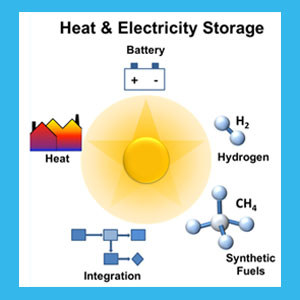Speaker
Ms
Annegret Stephan
(ETH Zurich)
Description
Lithium-ion battery technology is assumed to play an important role for future energy and transportation systems. Thus, industry, academia and policy makers aim at accelerating technological progress in this field. For the progress of a technology, knowledge development and diffusion plays an important role. Lithium-ion battery technology can be conceptualized as a complex product consisting of technically interrelated subsystems and components (multi-component technology). It is produced in different industry sectors that can be ordered along the battery supply chain. Organizations, mostly firms and research institutes, in these sectors share process-specific knowledge and capabilities required for the different components’ production, which differ strongly between the various sectors. Based on the multi-component multi-sector characteristic of the lithium-ion battery technology we specifically address the research question of which patterns of knowledge development and diffusion can be found across the different sectors of the lithium-ion battery technology. Knowledge is developed by different organizations and is transferred or recombined into new knowledge by the same or other organizations, which we refer to as knowledge diffusion. Hence, we focus on the two following aspects: First, to which extend do different sectors within the field of lithium-ion batteries specialize their knowledge within the sectoral boundaries with regard to their production activities or go beyond these boundaries (i.e. “which sector knows what”). Second, which patterns of knowledge flows can be observed within and across different sectors (i.e. “which sector learns from which sector about what”). We investigate the technology through a supply chain perspective enabling us to distinguish between different sectors and ensuring to encompass all relevant components. We employ a descriptive quantitative analysis of lithium-ion battery patent data in the period from 1985-2005 in the two most relevant countries, the US and Japan. Therefore, we assign each patent to (i) a component level and to (ii) a supply chain stage of the patent’s assignee. Our final database comprises 14,152 patents from Japan and 1,618 patents from the US. We take patent counts as proxy for knowledge development and counts of patents’ forward citations as proxy for knowledge diffusion and map knowledge development and diffusion regarding the two dimensions in both countries and over time. Our analysis shows that different sectors play different roles for the knowledge development and diffusion in the field of lithium-ion batteries. Especially firms of the sectors integrating lithium-ion batteries into larger technical systems (e.g. automotive, communication and IT technology) play the most decisive role for knowledge development and for knowledge diffusion. We furthermore show that knowledge development and diffusion started in specific component levels and from specific sectors and spread over time. Our results contribute to a better understanding of knowledge creation and learning mechanisms within the lithium-ion battery technology and provide a basis to derive sector-specific industry policy and management recommendations.
Author
Ms
Annegret Stephan
(ETH Zurich)
Co-authors
Dr
Catharina Bening
(ETH Zurich)
Dr
Tobias S. Schmidt
(ETH Zurich, Stanford University)
Prof.
Volker H. Hoffmann
(ETH Zurich)

